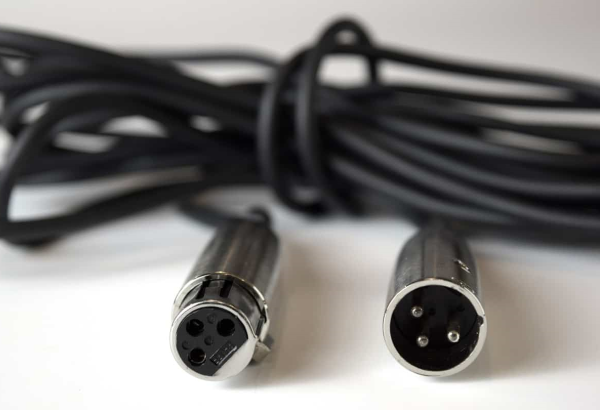Microphone cords are some of the most important cables that you will use when recording audio. One microphone cord is enough to connect a microphone to an amplifier, while two microphone cords can be used for stereo sound. XLR cables come in many different types and lengths, but they all serve the same purpose – connecting microphones or other devices to amplifiers. This article provides information about microphone chords including what they are, how they work, and why XLR microphone cords are so popular among professional audio engineers.
What is a Microphone Cord and What Does It Do?
A microphone cord is a device used to connect an amplifier or receiver with microphones. The cords are usually made of PVC, XL-plugs on each end of the 220V cable, and specific impedance (about 150 ohms) that matches that for use with dynamic microphones.

The cable is typically about 50 feet (15 m) long; the standard ended at 10 feet (3.0 m), but it was extended in 1973 because more expensive equipment operated at higher frequencies had more signals added to during transmission time than less expensive equipment.
How to Choose the Right Microphone Cord?
There are many things to consider when deciding which microphone cord is best for you. Length of the cable, durability, company brand (i.e. quality), and more may all effect your decision-making process.
Microphone cords are often personal preference. However, there are a few features to consider when purchasing one. For example construction material – two common types are cotton or nylon braided cable. Cotton cables are more popular mostly because they’re much cheaper but they run the risk of becoming frayed over time and ruining your connection to the mic. Nylon cables are stronger, tangle free, but also costly – however if you’re looking for an affordable cord that won’t need any kind of repair during its lifetime then go with this option instead.
The right type of microphone cord for you depends on what you’re trying to achieve with your audio setup. It’s important to note that more advanced digital signal processors might alter some parameters related to how well sound travels down a specific kind of mic cable.
Why you should use professional audio cables instead of regular ones?
There are many benefits to using professional cables. The biggest benefit is that regular cables don’t handle high-frequency content well, meaning that everything will sound muffled and the bass will be heavily distorted. Professional cables allow for these high frequency waves to travel without distortion due to their higher tolerance of signal amplitude. This way, you’ll receive better audio quality with greater clarity and more detail.

Professional audio cables have better shielding to prevent interference from external signals, meaning that the signal will be stronger with less electrical interference even when extending over distances longer than 10 meters. This means professional audio cables can both offer higher quality audio and higher reliability in your audio setup – especially if you’re looking to build a PA system or snake an entire event’s worth of mics through long-distance cables.
Different types of microphone cords, including XLR and RCA (and why they matter)
XLR and RCA are the two most common types of microphone cords.
RCA cables are primarily used for analog audio that is live, with the most common use being in configurations of microphones and stereo equipment. Additional uses include home theater setups or anything else that requires two signals–one for sound, one for power–to move through the same cable. There are three types of RCA cables: coaxial digital video (DVI), TOSLINK optical digital audio, and analogue stereo audio.
The type of microphone cord that is most commonly used in the studio, and by DJs, is XLR. The XLR interface was designed in 1975 to address two major flaws with other cables at the time – namely, signal degradation during long-distance transmissions, and resistive joints. Whereas other cables at the time were limited to relatively short distances due to interference from stray electric currents present in any cable shield, an XLR cable interface separates each signal line to allow for transmission over much larger distances without compromising sound quality.





